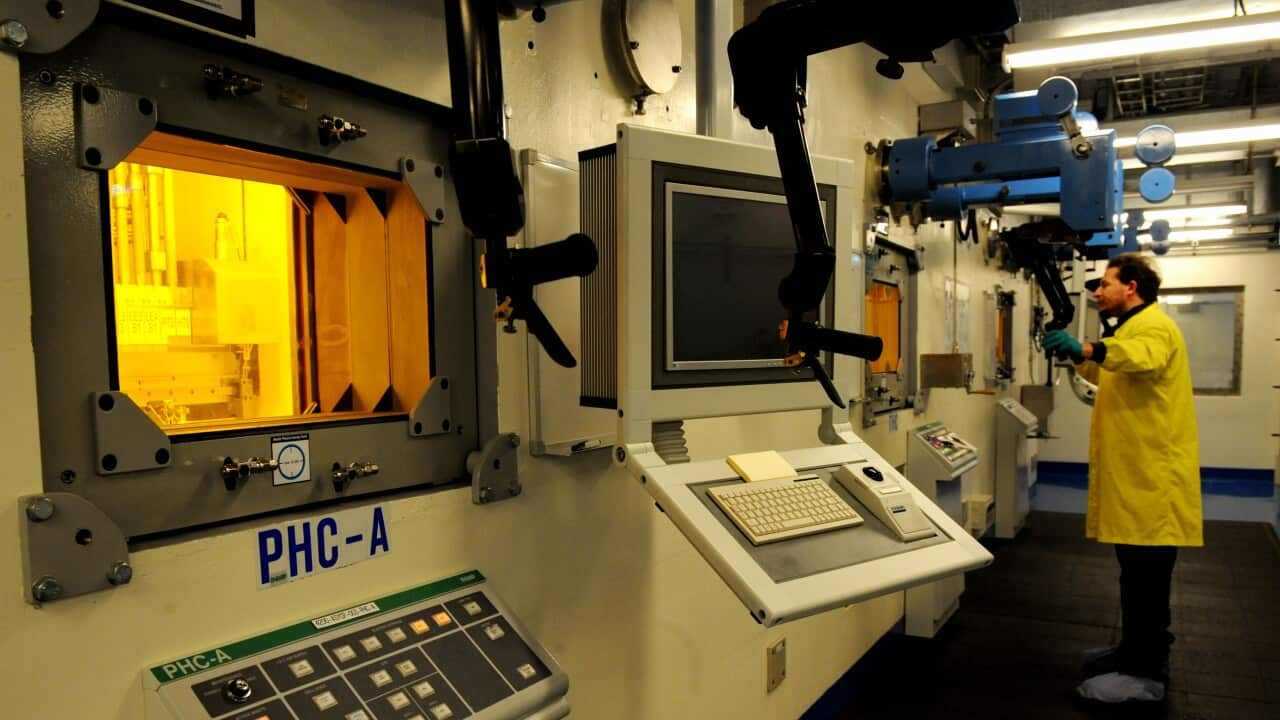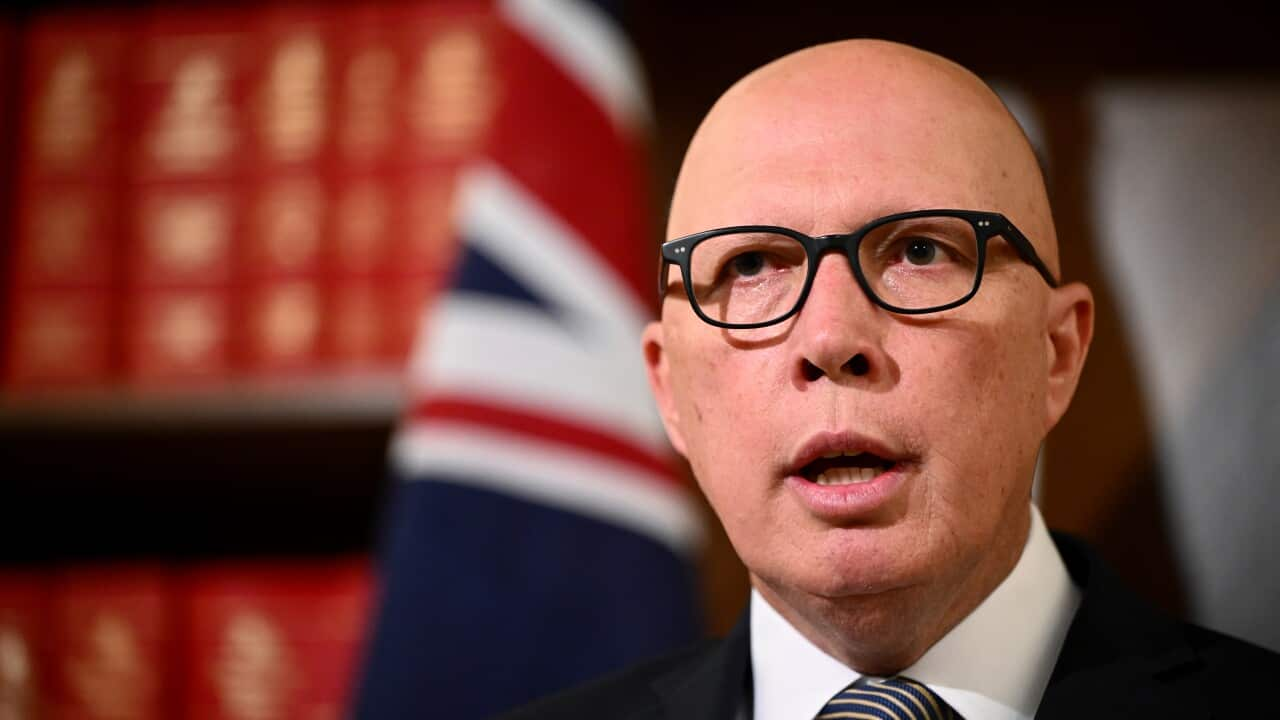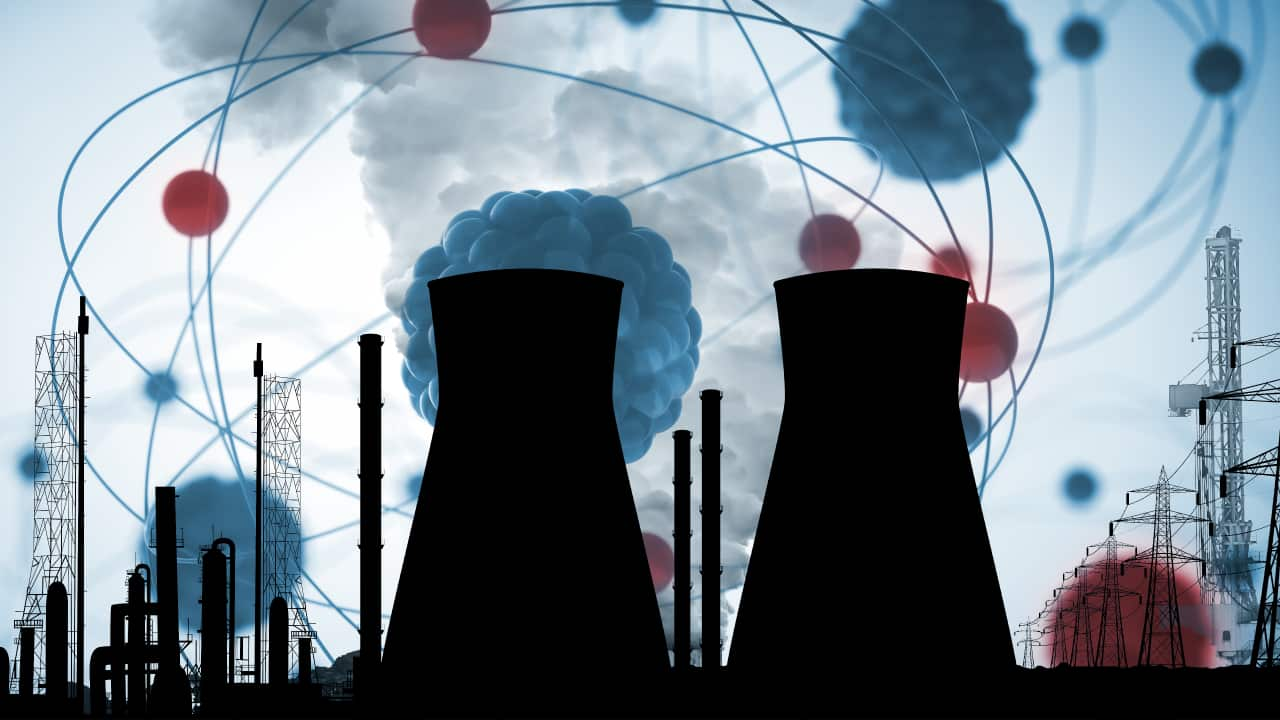Australians will debate whether to give nuclear power the green light at the next federal election, but many may not know a nuclear reactor has been operating about 40km south of Sydney's CBD for decades.
As the Opposition announced seven proposed sites for its nuclear transition plan on Wednesday morning, it pointed to Lucas Heights as a success story.
"Australia already has a nuclear station," Opposition climate change spokesperson Ted O'Brien told reporters.
"We know that nuclear technology saves lives. We know that because we have a nuclear reactor operating here in Sydney, it's been operating for decades, saving lives, especially diagnosing and treating cancers."
Both O'Brien and Opposition leader Peter Dutton used it as an example to alleviate concerns around the safety, use, and viability of nuclear plants.
Dutton also suggested that house prices in neighbourhoods with nuclear power plants wouldn't drop as property prices near the Lucas Heights reactor are comparable to other Sydney suburbs.
So how long has the nuclear reactor been there? And what is it used for?
When was Lucas Heights established?
Australia opened its only nuclear reactor in 1958.
The Lucas Heights reactor was originally built as a research laboratory, testing different materials for a future nuclear power program.
It evolved to become a research facility crucial for the medical community.

The nuclear reactor is about 40km south of Sydney's CBD. Source: Getty / Ian Waldie
What does Australia's only nuclear reactor do?
Lucas Heights is a radioactive medicine factory that uses its OPAL (Open-pool Australian Lightwater) nuclear reactor to crash atoms into uranium plates to produce different substances.
This includes vials of radioactive Molybdenum-99 which decays to form Technetium-99m.
The product can be used as a radioactive dye, with doctors injecting it to monitor organs such as the heart, kidney, lungs and brain. It is key to diagnosing cancers.

Inside the OPAL research nuclear reactor. Source: AAP / Tracey Nearmy
A 2018 independent report found due to the site's age it failed to meet modern nuclear safety standards. Last year, Science Minister Ed Husic announced the facility will be replaced with the new Lucas Heights facility expected to be operational by the mid-2030s.
Does it have a special legal provision?
In 1997, a Howard-led government proposed making a new reactor on the site to make nuclear medicine. The site was estimated to cost roughly $300 million.
To pass the legislation, the Coalition agreed to a Greens amendment to the National Radiation and Nuclear Safety Act in 1998 which specified no more nuclear facilities could be built in Australia.
Some states, including Queensland and NSW, have since legislated their own nuclear bans.











